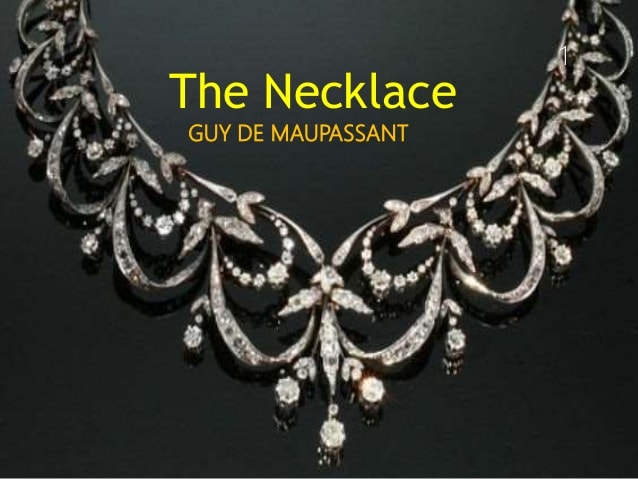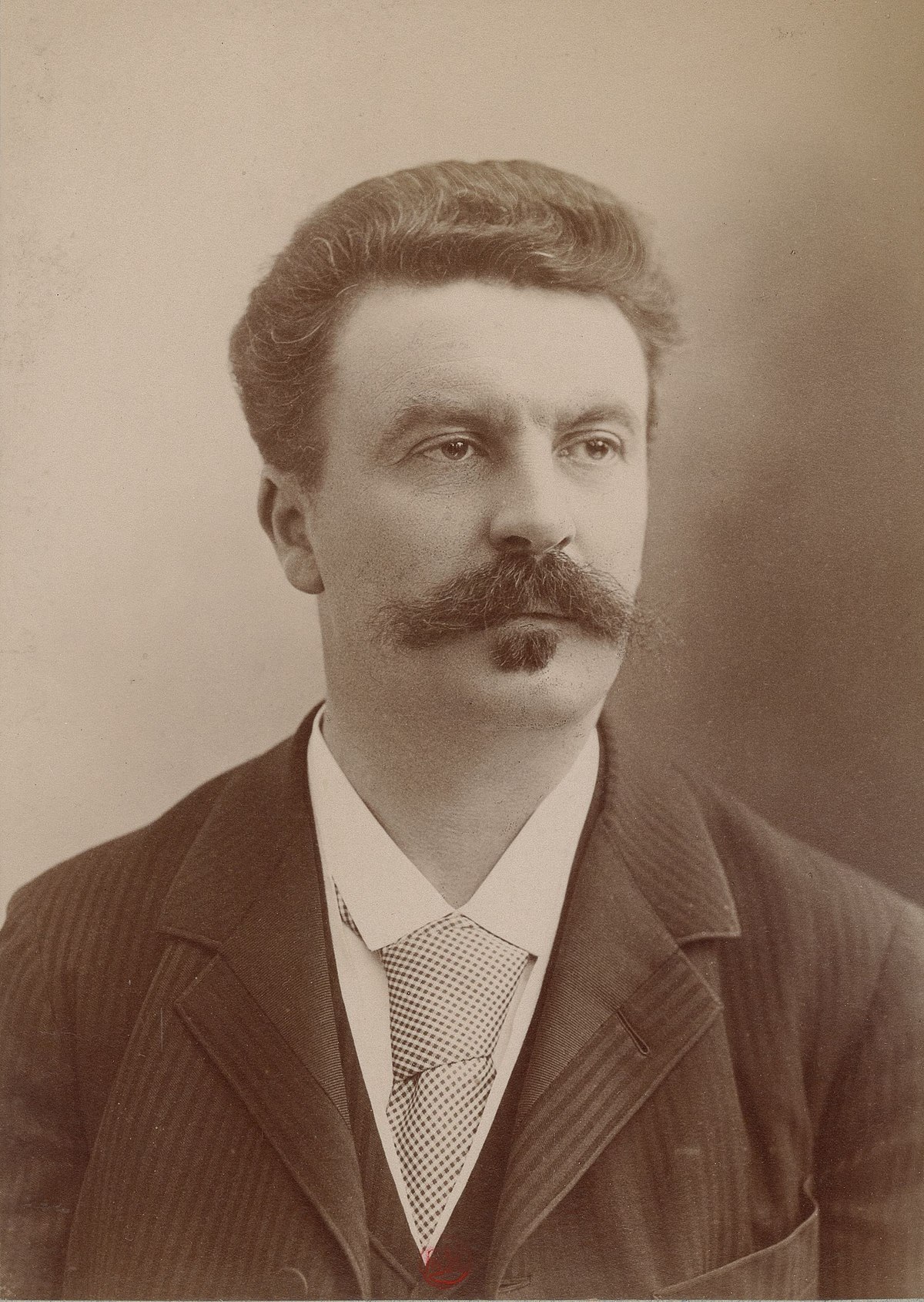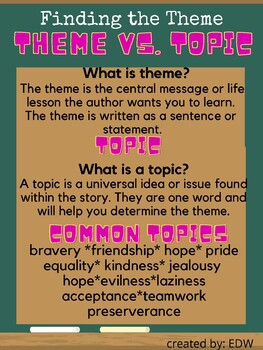
Grade Level: 9th grade
Topic: The students will read The Necklace by Guy de Maupassant, a story about a woman who borrows an expensive diamond necklace for a ball to make herself look wealthier, only for her to lose the necklace. She and her husband must find a way to buy a new necklace, despite not being able to afford it.
The students will learn about the author of the novel and answer discussion questions.
The students will learn the difference between theme and topic prior to reading the short story.
The students will have to state what they believe the theme of the story is, and use evidence from the text to support their answer.
About the Author
-
Guy de Maupassant was a French author who was known for writing short stories. He wrote “The Necklace” in 1884 and was published in a French newspaper.
-
He is famous for including plot twists at the end of his stories.

Learning Objectives:
Student will be able to (SWBAT) identify the author of “The Necklace” as Guy de Maupassant and explain that he is a French author known for writing short stories with a plot twists.
SWBAT identify the plot twist in the short story “The Necklace.”
SWBAT comprehend that a theme is the lesson the author is trying to tell.
SWBAT determine the difference between a theme and topic of a story.
SWBAT utilize a provided glossary to look up definitions of words that may be unfamiliar to the student.
SWBAT answer comprehension questions about the short story either through memorization or rereading the text to gather the information they need to answer.
SWBAT identify a theme from the short story or choose a theme from a provided list and
Pre-Reading Questions:
What is theme?
The theme of a story is a lesson or message that is learned based on what the author is trying to say. This is different from a topic of a story, which is the subject or central idea of the text.
Example: A theme of a story could be dealing with social injustices or equality, a broader statement that could be the theme of another form of writing. A topic deals with a certain situation and the people within that situation.

Glossary:
Antechamber– a small room that leads to a bigger room.
Caste– a division of society based on wealth (rich and poor are separate.)
Covent– a meeting or assembly, commonly a meeting formed by the Catholic church.
Craftsmanship– what skilled artists and builders demonstrate when they create something.
Dowry– property or money brought by a bride to her husband on their marriage
Francs– a currency or type of money used in France.
Gallantries– polite attention or respect given by men to women.
M.– short for Monsieur, which is used to describe males in French (like Mr. (Mister) in English and Sr. (Señor) in Spanish.)
Mme. – short for Madame, which is used to describe married females in French (like Mrs. (Missus) in English and Sra. (Señora) in Spanish.)
Ministry- a government department headed by a minister or leader.
Sou(s)– a type of coin or currency used in France.
Discussion Questions:
- Was Mme. Loisel’s life better or worse after her marriage? Why?
- Why did M. Loisel expect his wife to be pleased to receive the invitation from the Minister of Education?
- Why was Mme. Loisel anxious to hurry away from the ball? Was this right of her to do?
- What was the plot twist of the short story? How is it significant to the story as a whole?
Activity: Ask the student if they can come up with a theme for The Necklace based on their reading. This can be a broad range of answers as the story focuses on many different life lessons. Then, have the students trade themes with a a partner. The students should go back into the reading (or video) and identify two quotes from the text that support or help develop this theme.
Examples for activity:
The first theme is wealth and happiness: Mme. Loisel only believes wealth can make her happy. Madame Loisel is consumed by her possessions. She is a common woman obsessed with advancing to high society. For one evening, she sneaks a peek at the life she’s missing when she purchases a 400-franc dress and borrows what she believes to be a diamond necklace from her friend. She takes satisfaction not in the utility of these items but in their appearances. They make men notice her at the party and women envy her. In the end, Madame Loisel’s obsession with possessions is her undoing. The theme here is that pursuit of possessions never really fulfills her any more than they can fulfill almost anyone.
The second theme is greed: Mme. Loisel takes no pride in her husband and what he does for her. She does not value his job or work ethic because hard work doesn’t build character for her; it signifies a lack of power and status on the part of the worker. She finally shows a hint of affection to her husband when he agrees to allow her to buy the expensive dress for their party. She fails to see the intrinsic value of his affection. Madame Loisel is later forced to work harder than she ever had to raise the money to replace the necklace. Her 10 years of back breaking effort to replace the necklace are a reflection of the years of anguish that came before, when she was never satisfied with what she had.
The third theme is be grateful for what you have: Mme. Loisel lived life comfortably with a loving husband who did everything in his power to make her happy. He bought her a fancy, expensive dress for the ball, got the invitation to the ball, and did everything in his power to help pay off any debt they had after having to repurchase the necklace. In the end, purchasing a new necklace was unnecessary but he did it for her anyway. If Mme. Loisel had appreciated what she had before losing the necklace, none of it would have been taken away
Published: Sep 22, 2021
Latest Revision: Sep 26, 2021
Ourboox Unique Identifier: OB-1204957
Copyright © 2021








